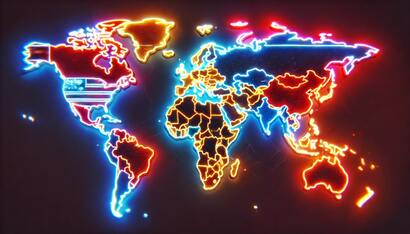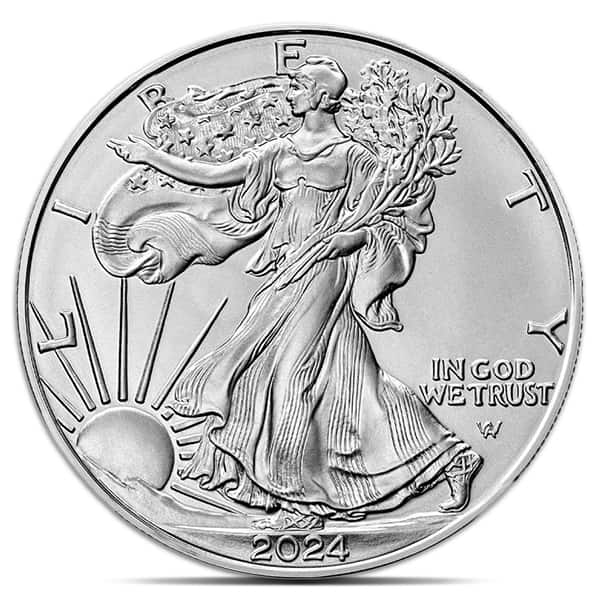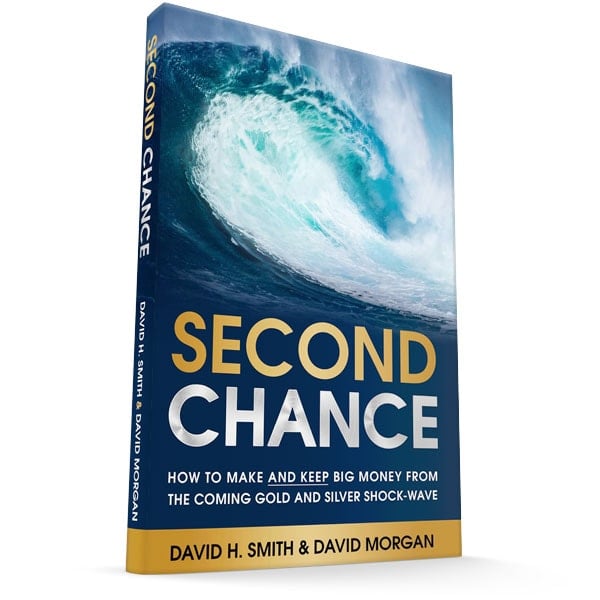In a recent Money Metals podcast episode, host Mike Maharrey sat down with renowned precious metals analyst David Morgan, the author of The Silver Manifesto and publisher of The Morgan Report. Their discussion touched on critical global financial issues, including the BRICS Summit, precious metals markets, and central bank digital currencies (CBDCs).
BRICS Summit: Hype vs. Reality
Morgan began by sharing his skepticism about the recent BRICS Summit in Kazan, Russia. He echoed Maharrey’s impression that, despite significant attention, the event yielded more rhetoric than actionable progress. Russian President Vladimir Putin’s display of a mock currency, Morgan humorously compared to the promotional currency he distributed at investment conferences, underscored the lack of substance behind some BRICS initiatives.
Morgan highlighted two major hurdles for BRICS countries: the dominance of global debt denominated in U.S. dollars and the lack of a unified, widely accepted alternative currency. He mentioned that real progress would require greater currency diversification among participating nations. Nonetheless, he acknowledged the potential impact of a BRICS-backed precious metals exchange modeled after the Shanghai Gold Exchange, emphasizing that this could disrupt traditional price discovery dominated by institutions like the LBMA and COMEX.
The Dollar’s Global Influence and Changing Dynamics
Maharrey and Morgan explored the diminishing role of the U.S. dollar. Morgan pointed out that a decade ago, the dollar accounted for 68% of global trade, but that number has dropped to 58%. He cited the gradual decline in the dollar’s dominance, noting that energy markets, once exclusively reliant on the petrodollar, now accept other currencies for oil transactions.
Despite this trend, Morgan doesn’t foresee an imminent currency crisis but acknowledges the potential for significant changes as global players adopt alternative settlement methods. The long-term strategy, he argued, likely involves the implementation of a global currency or a network of digitized systems governed by ISO 20022 standards.
CBDCs and the Push for Digital Control
Morgan voiced strong concerns about CBDCs, particularly their implications for privacy and government surveillance. He shared insights from his travels, recalling an early 2000s meeting between the Rockefellers and Chinese banks in Beijing. He sees China’s mature digital currency and social credit systems as a potential model for global implementation.
Morgan warned about the increasing likelihood of private banks, like JPMorgan, issuing government-sanctioned digital currencies, bypassing legislative obstacles. Maharrey expressed concerns about consumer-level CBDCs, noting potential abuses, such as transaction monitoring and the ability to disable accounts.
Silver and Gold Market Analysis
Turning to the metals market, Morgan addressed recent silver price movements, noting a high near $35 before a pullback to $32.87. He believes that $40 silver is plausible in 2025, provided there are no significant market disruptions. He explained that $32.50 serves as a crucial support level and that breaking below it would signal weakness. However, silver’s notorious volatility often surprises investors, he cautioned.
When Maharrey asked which milestone is more likely, $3,000 gold or $40 silver, Morgan leaned towards gold, citing central banks’ growing gold reserves. He emphasized gold’s status as a “monetary hitching post,” noting central banks’ reluctance to tie currencies to it despite stockpiling it as a hedge.
Gold-Silver Ratio and Historical Perspective
Morgan explained the historically high gold-silver ratio, which remains in the 80s. Historically, before the demonetization of silver, the ratio hovered around 20. He believes silver’s monetary role has diminished but maintains it will eventually outperform gold in percentage terms. Despite skepticism, he expects silver to regain some monetary appeal, especially as people seek alternatives to CBDCs and digital currencies.
Russia’s Silver Strategy and Global Implications
Maharrey inquired about Russia’s recent announcement to add silver to its wealth fund. Morgan shared a cautious but intrigued outlook. He recounted images of Putin walking through pallets of silver, emphasizing silver’s strategic importance for technological and military applications. Morgan also referenced China’s past efforts to re-refine gold into kilo bars to ensure purity, highlighting long-term strategic thinking in the East compared to the West’s short-term financial focus.
Final Thoughts and Looking Ahead
The episode concluded with Morgan discussing the upcoming U.S. presidential election. While historically, precious metals perform better under Democratic administrations, he emphasized that macroeconomic trends, like BRICS developments and ISO 20022, will be more influential than the election outcome.
Morgan encouraged listeners to join his mailing list for The Morgan Report and teased his upcoming documentary, SilverSunrise, set to release around Christmas. He hopes the film will educate viewers about systemic financial issues and inspire individual action to preserve financial freedom.
As Morgan noted, “Honest money is tied directly to freedom,” a principle he believes must be defended against increasing financial control mechanisms.
Key Questions & Answers
The following are the key questions and answers from the Money Metals Podcast with host Mike Maharrey and David Morgan:

What were your impressions of the recent BRICS Summit in Kazan, Russia?
It was very similar to yours, Michael. I’m a show me, don’t tell me kind of a guy. That’s a lot of talk but not a lot of action. And then of course Putin held up this … the currency. Well, that was just a mock-up, I mean, I could have given one of my million-dollar bills. The main thing that the BRICS have as an issue is how to make it a viable currency when it’s outside the US system. Because most of global debt is in US dollars, which most of these countries or all of them at this point in time, are not going to be able to get out of those debts by paying it off in a different currency.
Do you think the rise of BRICS could start to erode the influence of the dollar or create a currency crisis?
Yeah, I don’t know about the currency crisis. But no, you’re spot on, Michael. If you go back, I think a decade, I think it was 68% of all world trade was settled in the US dollars. Now it’s like 58%. So that’s the trend, and that will continue. But it doesn’t mean that the BRICS is going to be a head-to-head competitor with the dollar.
Do you think we could see $40 silver in the near future?
Yes, I do. I mean, 32.50 is more or less the line that most technical analysts draw. And I’ll use that one. Now we’re still above that. But I think 40 next year, I don’t think it’s this year. But there’s so much out there that could change things quickly, like two black swans doing a head-on collision.
What do you think is more likely to happen first: $3,000 gold or $40 silver?
I think it’s more likely $3,000 gold. The reason is that gold really is establishment. Look at what the central banks do. They’ve been collecting gold for quite some time and know it’s a money of last resort.
Why is the gold-silver ratio so high, and what does it mean?
The demonetization of silver took place a long time ago. The gold-silver ratio never got above 20 for centuries until the late 1800s. The highest purpose of silver was as money. Now, when it became more of an industrial commodity, the ratio increased to 40s, 50s, 80s, and even 125 in March 2020. So, the ratio being high reflects silver’s diminished role as money.
Did you make anything out of Russia announcing plans to add silver to its wealth fund?
I’m very conservative, as you know. But yeah, I’m looking at it carefully and think it has the potential to move the market. Putin knows silver is strategic, especially for technology and war efforts. But I want more data before making strong conclusions.
How do you think the upcoming U.S. election will affect precious metals markets?
If we get a Democrat in office, history shows that the metals do better than with a Republican. But that doesn’t necessarily mean it’ll happen this time. Overall, it’s more important to look at global developments like BRICS and ISO 20022, which influence finance beyond election outcomes.
These questions and answers capture David Morgan’s key insights from his conversation with Mike Maharrey on the Money Metals podcast.
Source: Money Metals Exchange





Be the first to comment on "“Silver Guru” David Morgan Talks BRICS, Silver Trends, and the Future of Money"